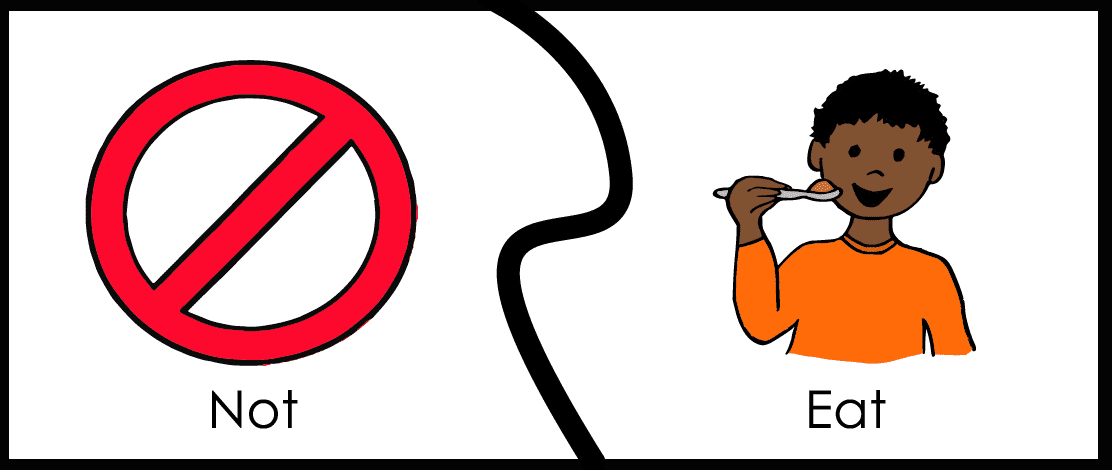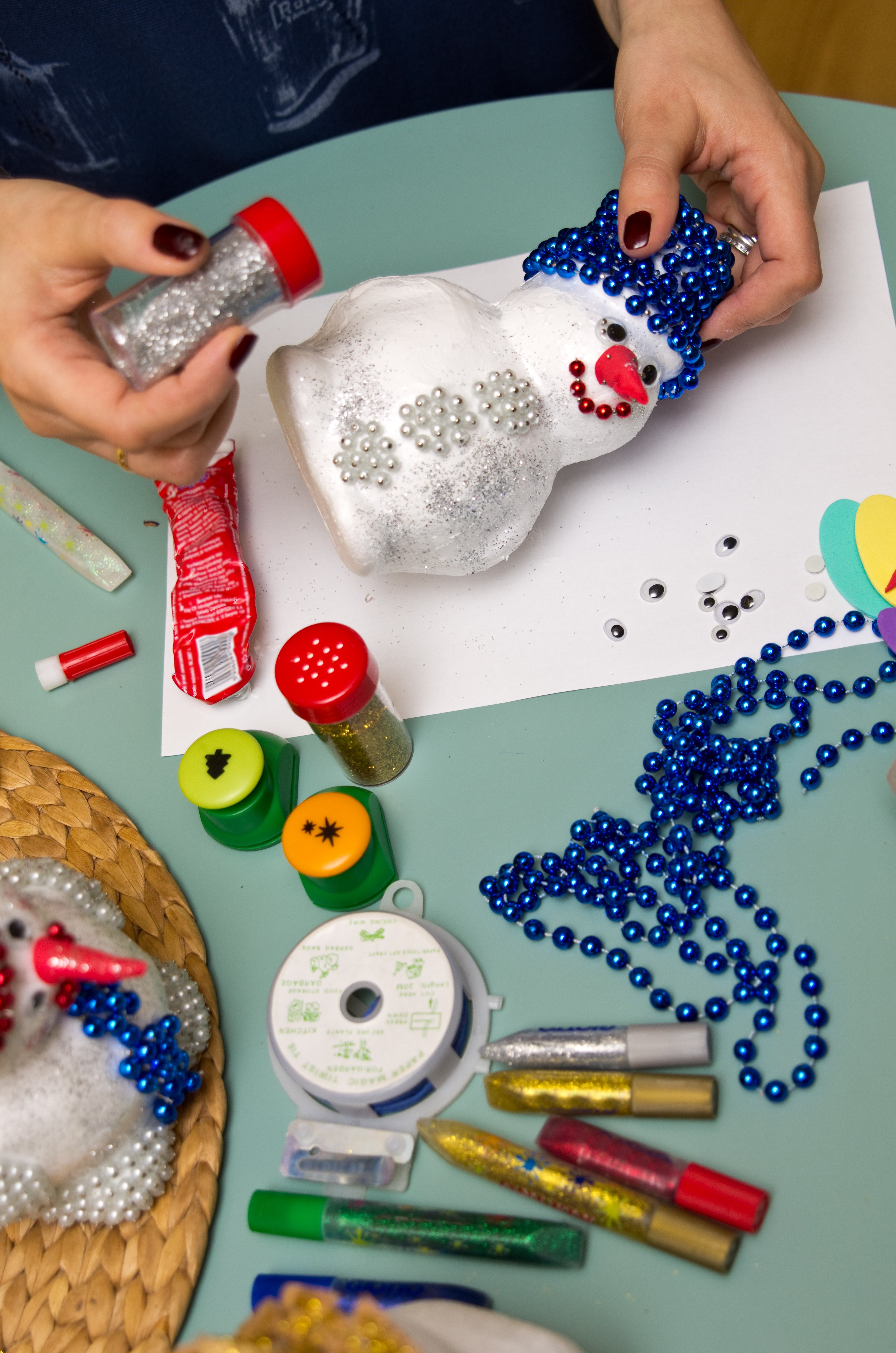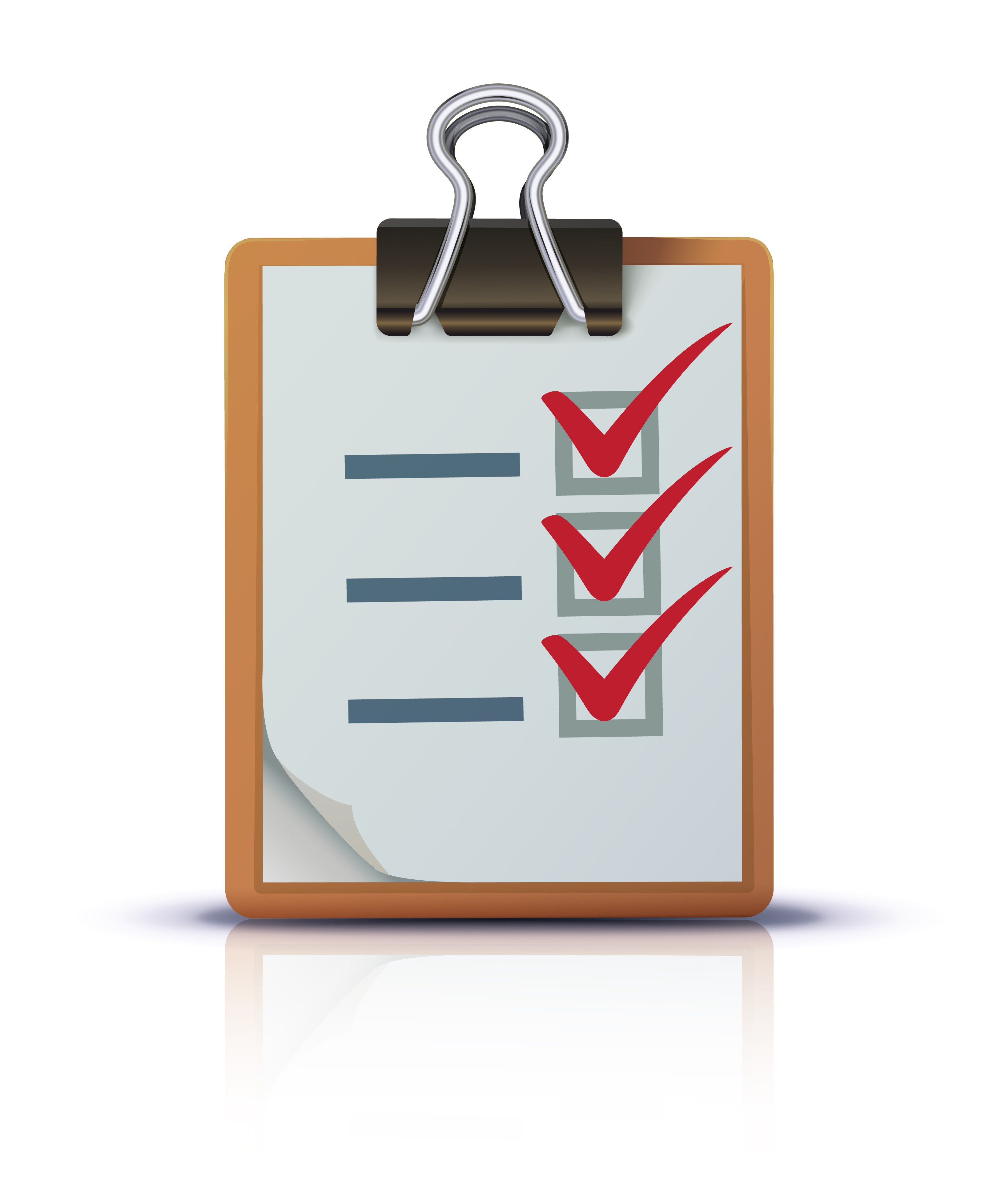
Model and prompt the words on the device. Encourage and demonstrate one quick motor pattern from one word to the next, so that the two words are spoken as close together as possible.
Repeat the word that the person speaks on the device, then proceed to act it out.
Try different prompting methods. Consider hand over hand, verbal prompting, and/or using a penlight or laser pointer to highlight the word.
Print out Do or Do Not cards. Use the cards with your student to talk about things you should do and things you should not do.
Print out the Negative Puzzle cards. Have your student use their device to tell you which words go together.

When you have finished reading a book, ask the person to indicate whether he or she wants to read more. Model the phrase “don’t read” or “stop read.” Also model the phrase “read more.” Be sure to do what the person requests.
Ask the person to choose the next book. Model the phrases “read that” and “don’t read.” If the person says “don’t read,” put the book away.

The writing template allows for students to decide whether if the picture shows something you can 'eat' or 'don't eat.' If the student's device has computer emulation capabilities, they can use their device to fill in each text box. If not, simply do it for them after they say 'eat' or 'don't eat.'
Connect the device to a computer with a USB cable or Bluetooth module. Let the person practice writing phrases in a word document. Model and prompt the negative phrases that the person is learning.
If you are using WordPower (Saltillo or TouchChat), save the person’s writing using Stories and Scripts within the vocabulary. Learn more about this feature here.

Do art projects with various materials. Model the phrases “like that” and “don’t like.” Ask the person to make a choice of material by using either “like that’ or “don’t like.” Put some un-favorite items out for choices (coffee grounds, dirt, – but be careful, this might backfire!)
Have 2 or 3 different toy choices - e.g., bubbles, blocks, and cars. Model the phrases “do that” and “not that” (in conjunction with pointing/eye pointing) to choose the activity. Once the activity has been chosen, use appropriate two-word phrases within the activity. For bubbles or cars, for example, you can use “go more” to request more bubbles/car movement. For blocks, you could use the phrase “need more” when he/she runs out of blocks. Try doing things that sabotage the person’s play, for example putting roadblocks in front of cars. Model the phrases “stop that,” and “not that.” Encourage the person to direct you by expressing negatives.
If the person continues to use one-word phrases (e.g., “eat” instead of “want eat”), acknowledge that you understand them, model the two-word phrase, and ask them to repeat. If they still use one word, give them a choice between stopping and continuation (e.g., "more eat" or "don’t eat").
During snack time, ask the person if you can have his or her snack. Reach for something the person is eating. If the person does not say “stop that” or “don’t eat,” then model the phrases on the device.
Can-Do Cards are fun, motivational activities the entire family can do to help your child improve their communication skills. Most activities will fit nicely into your daily family routines.
Start Homework Plan
NEXT SECTION
Phrases to Express Requsts
Select if you’re proficient at this objective and ready to move onto the next objective
Common Core Standards
Below are references to the Common Core Standards organized by grade level and associated with the goals and objectives of this lesson plan. When considering which standards to target in your lessons with students, begin by looking at the standards at your student’s grade level. You may need to refer to that same standard at a lower grade level to adapt your lesson to best meet the needs of your student.